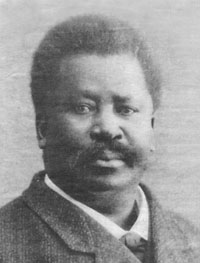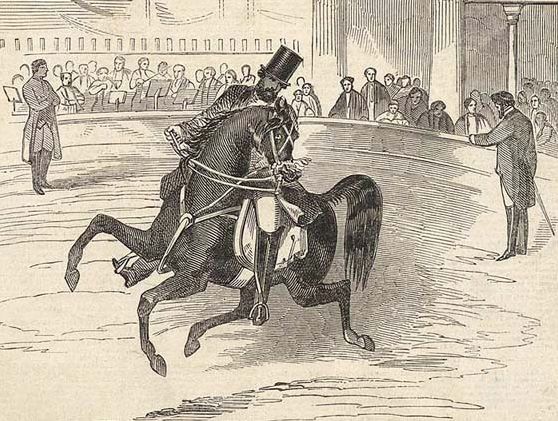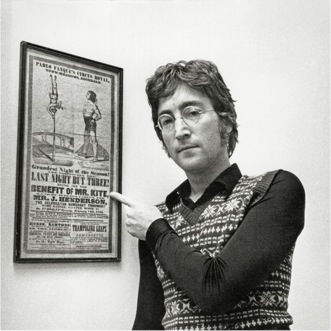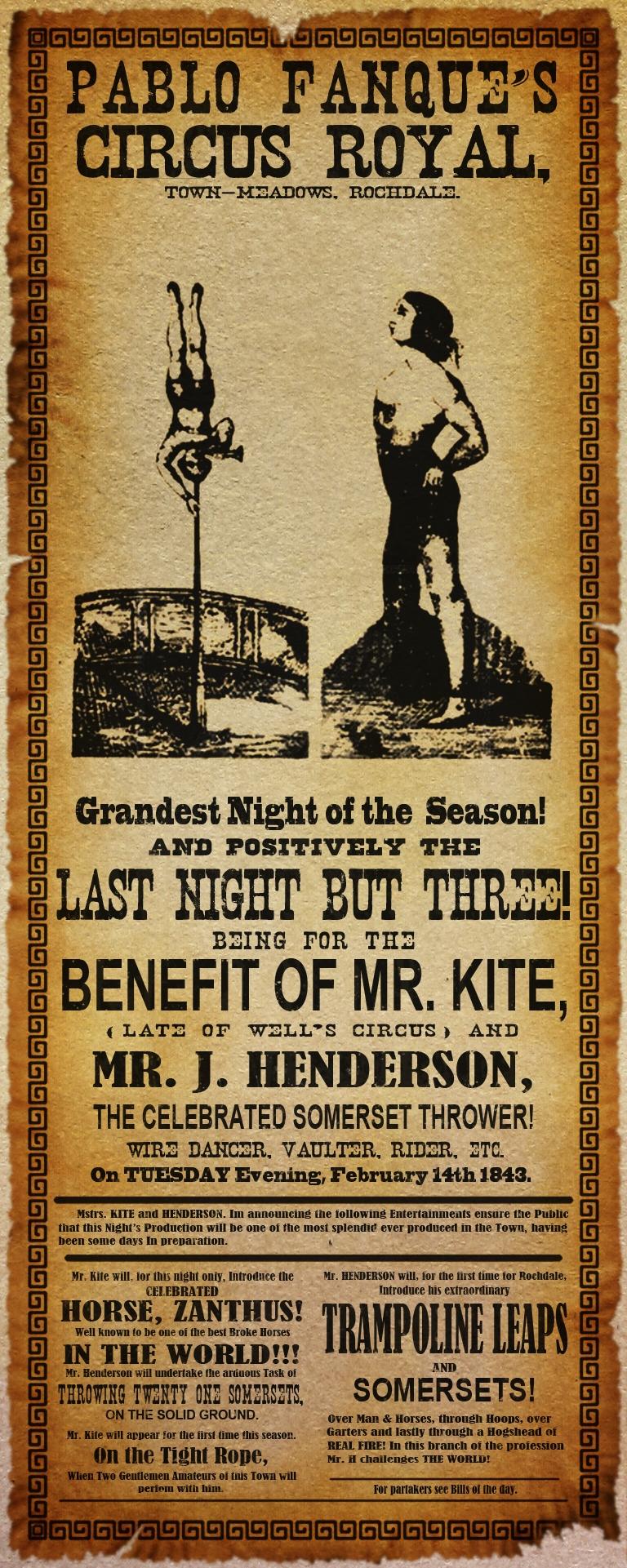Mr. Kite
Mr. Kite was William Kite, son of circus proprietor James Kite, and an all-round performer. The poster shows Mr. Kite balancing, head down, on top of a pole, playing a trumpet. In 1810 he had founded Kite's Pavilion Circus and later moved to Wells' Circus. It is thought that he worked in Pablo Fanques' fair between 1843 and 1845.
The Hendersons
John Henderson and his wife Agnes were wire-walker, equestrian, tramplinist and clowns. The Hendersons traveled all over Europe and Russia during the 1840’s and 1850’s.
The 'somersets' which Mr. Henderson performed on 'solid ground' were somersaults, 'garters' were were banners held between two people and a 'trampoline' in those days was a wooden springboard rather than stretched canvas. A 'hogshead' was a wooden barrel.
The poster is from 1843, but in January 1848, both Mr Kite and the Henderson's had left Pablo Fanque by then and so did not appear on a Sheffield bill that night in 1848.
 Pablo Fanque
Pablo Fanque
Pablo Fanque (born William Darby in 1796 (or 1811) in Norwich - died May 4, 1871 in Stockport) was the first black circus proprietor in Britain and a famous showman in his time.
He began as a circus performer in his youth but became the proprietor of his own circus company. Details of Pablo Fanque’s early life are scant. Church records suggest that his parents were John Darby and Mary, née Stamp, a Caucasian woman. They married in 1791 and lived in St. Stephen’s parish in Norwwich, Norfolf, England. William was one of their four or five children.
On William's first marriage certificate, in 1848, he declared his late father’s occupation as "butler". It is possible that his father was African born and had been brought to the port of Norwich and trained as a house servant.
Pablo’s earliest known appearance in the sawdust ring was in Norwich on 26th December 1821, as ‘Young Darby’, with William Batty’s company. His circus acts included horsemanship, rope walking, leaping and rope vaulting.
In 1841 Pablo, aged forty-five and living in Oxford, left William Batty to begin business on his own account, with two horses. The towns of Lancashire, Yorkshire and adjacent counties became Pablo’s favourite venues.

Pablo Fanque. Expert equestrian, tightrope walker, acrobat, showman and Britain's 1st black circus owner
Pablo married Susannah Darby, née Marlaw and had two children with her: William (1831-1869 †in Balmain, Australia) and Lionel. Susannah died in a tragic accident. She was at her husband Pablo's circus in Leeds on the night of Saturday March 18, 1848. Pablo’s son was entertaining a large crowd with his tightrope act when a
wooden gallery collapsed. There were 600 people seated on it, and they fell with the timbers. There were a few bruises and the odd broken bone, but only one fatality - Pablo’s wife. She had been hit on the back of the head by two heavy planks. She was dead.
Pablo mourned, but not for long. In June of that year he married 22 year old Elizabeth Corker in Sheffield. She was a circus rider and a daughter of a licensee George Corker who may have been living in Bradfield near Sheffield. Pablo, who gave his age as 30, was actually 30 years older than his bride! With her he had two more sons, George (1854–1881) and Ted (Edward) (1855–1937), who also went into the circus as equestrian clowns.
By the 1860’s Pablo’s circus was in decline. He continued to travel with his circus until his death in Stockport in 1871, at the ripe age of seventy-five.
Pablo’s funeral took place in Leeds Woodhouse Cemetery and was a spectacular occasion. The hearse was preceded by a band playing the ‘Dead March’, followed by Pablo’s favourite horse, Wallett, and four mourning coaches. The deceased and his horse were brought from Stockport by train, and were met by throngs of well-dressed spectators. He was buried alongside his first wife.
His son William, who emigrated to Australia has his own webpage here.
|


 Pablo Fanque
Pablo Fanque